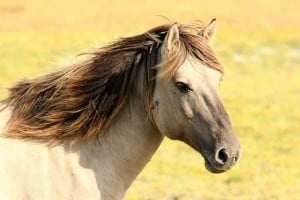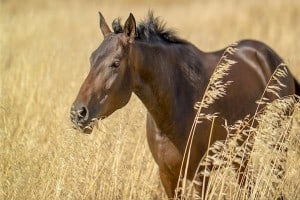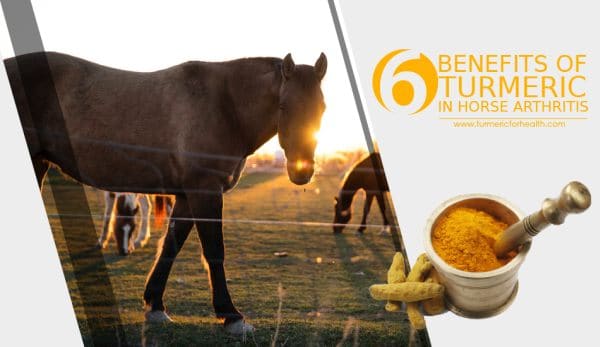Arthritis in horses is a condition characterized by degenerating tissues in joint. Scientists state that arthritis is a natural outcome of the aging process.
Therefore every horse is susceptible to this disease.
However, injury and excess workload increase the chances of developing arthritis.
But no worries, this disease can be managed.
What exactly happens in this disease is that articular cartilage, a flexible tissue present in between the joints, is damaged. This damage resists motion between the joints and causes stiffness and pain.
Symptoms associated with arthritis in horses are:
- Swelling of joints
- Joints feel unusually warm upon touching
- Stiffness in movement
- Lameness or pain
- Difficulty in getting up or lying down
Please feel free to use the Table of Contents below to jump to the relevant section in the article.
Table of Contents
What is the kind of treatment prescribed for arthritis in horses?
To control the pain and inflammation, vets prescribe nonsteroidal anti-inflammatory drugs like phenylbutazone, flunixin meglumine, ketoprofen, naproxen, and carprofen.
Steroids may be directly injected into the affected joints.
Chondroprotectants or agents that protect bone cells are also prescribed.
Oral joint supplements like glucosamine, chondroitin sulfate, and hyaluronic acid (HA) are recommended to offer daily support for healthy joint fluid and tissues.
Research also suggests the use of nutraceuticals in horses.
How do these drugs act?
Each of the above-mentioned drugs has different modes of action:
- NSAIDs- they reduce inflammation primarily by acting on an enzyme known as cyclooxygenase
- Steroids- they control pain and inflammation by suppressing immune responses
- Chondroprotectants- they promote healthy bones by regulating bone absorption and formation
Since each class of drug has a unique manner of treating the condition, a combination of drugs is prescribed for the healthy management of the disease.
How can Turmeric help in Treating Arthritis in Horses?
Turmeric can help in horse arthritis, thanks to its natural anti-inflammatory and anti-oxidant properties. Turmeric is also nature’s best painkiller, thus helping in symptoms of horse arthritis. It is known to be better than NSAIDs for this purpose. Further, its bone-protective properties can help prevent arthritis.
Turmeric is a Miracle herb and a Golden Spice coming from Asia. Turmeric powder is extracted from a rhizome as a bright yellow powder.
This color is due to the presence of curcuminoids- bioactive constituents of turmeric that exert a number of biological actions. Curcumin is the principal curcuminoid. Extensive research has been conducted on the pharmacological properties of curcumin.
Following are the different ways in which turmeric can help in equine arthritis:
1. It is a strong anti-inflammatory agent

Inflammation is a vital process when it comes to wound healing and infection but in some conditions and diseases, it occurs in excess and causes redness, swelling, and pain.
It inhibits the activity of cyclooxygenase enzymes (COX-1 & COX-2) which promote inflammation and support the production of prostaglandins.
Prostaglandins are hormone-like chemicals that either cause aggregation or disaggregation of platelets in inflammation.
Turmeric also prevents migration of immune cells to the affected site and reduces the activity of pro-inflammatory chemicals like tumor necrosis factor and interleukins. Curcumin regulates the activity of protein-nuclear factor kappa B which controls the activity of genes regulating inflammation.
Turmeric extracts containing a higher proportion of curcuminoids have a pronounced anti-inflammatory effect. This anti-inflammatory property imparts anti-arthritic property.
A study conducted on cartilage cells collected from joints of horses was stimulated by the inflammatory agent, interleukin-1 to imitate the inflammatory process that leads to cartilage degradation in osteoarthritis.
Curcumin treatment reduced the effect of interleukin-1; this suggests that curcumin can prevent inflammation-induced cartilage loss.
Turmeric’s anti-arthritic property is proven to be as good as that of phenylbutazone, a painkiller commonly prescribed to horses and also used by humans.
What does this mean?
Turmeric has anti-inflammatory property which contributes in controlling pain and inflammation in arthritis.
2. It is better than NSAIDs
NSAIDs or painkillers prescribed to reduce inflammation and pain act by inhibiting the activity of COX enzymes. Most of them act on both enzymes or some act selectively on COX-2, thus preventing any side effects.
Interesting enough, curcumin also acts in the same fashion. It can inhibit both or selectively inhibit COX-2 enzyme. This property of curcumin helps in controlling pain better than regular painkillers such as indomethacin and diclofenac sodium.
A couple of studies have investigated the role of turmeric in disorders characterized by excessive inflammation in horses. These studies show that curcumin and curcuminoids by means of their antioxidant property combat the harmful reactive oxygen species (which could cause cell death and tissue damage) produced by inflammatory immune cells.
Therefore researchers feel that curcumin can help in treating inflammatory diseases in horses. This anti-inflammatory property of curcumin is useful in reducing pain.
What does this mean?
Turmeric has the same mechanism of action as regular painkillers.
3. It can serve as an alternative to steroids
Steroids such as bexamethasone and prednisone are prescribed to treat swelling and pain in equine arthritis. They mimic the hormone, cortisone which is naturally produced in the body.
They control inflammation by reducing the immune system’s activity and preventing migration of immune cells to the area of inflammation. Research proves that curcumin is an immunosuppressant and shows steroid-like activity.
Curcumin acts as an immunomodulatory agent by inhibiting activation of immune cells, preventing the release of pro-inflammatory cytokines and influencing the activity of proteins involved in inflammation.
One study proves that curcumin enhances the anti-arthritic effect of prednisolone, a steroid medication.
What does this mean?
Turmeric can suppress immune responses and prove to be a safer alternative to steroids.
4. It influences bone health
Experimental studies prove that turmeric exerts a chondroprotective effect. Chondrocytes are bone cells. There are two types of cells which play an important role in osteoarthritis:
- Osteoclasts- They absorb old bone material.
- Osteoblasts- They help in new bone formation.
Curcumin can prevent osteoarthritis by reducing inflammation, supporting development of osteoblasts and inhibiting the activity of osteoclasts. Curcumin inhibits the activity of osteoclasts which in turn prevents bone loss and absorption in arthritis.
What does this mean?
Turmeric and its bioactive constituent, curcumin protects bone health by preventing loss of bone tissue and promoting formation of new bone tissue.
5. It is a natural anti-microbial agent

Turmeric is a natural anti-microbial agent. It has anti-bacterial, anti-viral, parasiticidal and anti-fungal activity. Curcumin has anti-fungal activity comparable to ketconazole, anti-fungal medication and even turmeric oil possesses anti-fungal property.
Research studies prove that anti-microbial activity of turmeric is comparable to antibiotics such as ampicillin, amoxicillin etc. Turmeric is found to be effective against multidrug-resistant strains of bacteria.
What does this mean?
Turmeric’s anti-microbial property can prove to be therapeutic in case of septic arthritis.
6. It can protect from side effects of conventional drugs
Painkillers and steroids do tend to cause side effects such as damage to the lining of the stomach and intestines. This can cause loss of appetite, weight loss, and other gastric symptoms.
Research proves that turmeric has a gastroprotective property in humans. It protects the gastric lining from damage and erosion. This makes it an ideal alternative to NSAIDs and steroids.
What does this mean?
Turmeric can protect the stomach from side effects of painkillers and steroids prescribed to treat arthritis.
Pet stories: Real experiences of pet owners and vets with turmeric
Two private studies were conducted by Dr Tom Schell, a vet who specializes in horse health. In this study, he developed a formulation containing curcumin, vitamin E and vitamin C with the help of a nutraceutical company.
He tested this formula on two groups of horses by including the formula in their feed once daily for a month. Lameness improved in all horses by at least one grade and in most horses, it improved by 2 grades.
Stiffness also reduced and the horses suffering from maximum stiffness experienced free movement. The improvement was so significant that most horses were removed from the daily administration of joint supplements and phenylbutazone.
Overall 80% improvement in all horses was observed by both owners and researchers.
Dosage
There is no set dose of turmeric for horses. Most owners start with1 teaspoon of turmeric twice a day.
You can mix 2 teaspoons or 1 dessertspoon of turmeric powder with 5-10ml of olive, coconut or linseed oil. To this add 6-8 grinds of freshly ground pepper and water to make a paste. Mix this paste with your horse’s feed.
You can also cook this paste over the flame to make ‘Golden Paste’ and store the paste in the fridge.
In fact, you can use the same Golden Paste that you consume for your horse.
If you plan to prepare the paste for every feed then here is how to do it:
Take about 125 ml turmeric powder and add this with 250 ml water to a pan. Cook on low flame till you make a good paste.
Add the water slowly such that the paste is neither watery nor thick. You could add more turmeric powder if the paste is watery and more water if it is too thick.
Then add about 1 1/2 (7.5ml) teaspoon of freshly ground black pepper and 70 ml of oil. You could use coconut or olive or flaxseed oil.
Keep stirring till all the ingredients are mixed properly. Let the mixture cool down.
Add around 1 teaspoon to your horses feed once a day and add a lot of water to the feed to mellow down the spicy taste. This is just a start. Slowly increase it to twice a day based on how it suits your horse.
Avoid using oil if the feed is already rich in fats. Also, mix a lot water in the feed while adding turmeric as horses find this combination more palatable.
Turmeric can also help in other horse health issues –
Read – Turmeric benefits for Ringbone
Read – Turmeric benefits for Greasy Heel
Read – Turmeric benefits for Equine Sarcoids
Read – Turmeric benefits for Laminitis
Precaution
Including turmeric in your horse’s feed should not cause any side effects. Gastrointestinal problems are a possibility if the dose is in excess. In this case, reduce the dose or discontinue turmeric from your pet’s diet.
Also, avoid turmeric prior to surgical procedures to avoid the risk of bleeding.
Turmeric finds its use as herbal medicine in Trinidad and it is said to flush out the uterus. This could have implications for equine gestation and postpartum health.
Conclusion
Turmeric has anti-inflammatory, anti-arthritic, bone protective and analgesic properties and this makes it an excellent supplement for your horse.
It also has antioxidant and immune boosting properties which can aid in maintaining overall health and physical performance of your horse.
All in all, it is great to include turmeric in your horse’s diet and if you already do, let us know your experiences.


I am about to start this on my horse. He also is on Missing Link joint and hip formula, Animal Element Detox, and electrolytes. Will this interact with these supplement?
How am I did it right or wrong?
can I just sprinkle Turmeric powder on my horses feed? I do not understand why you have to add pepper & oil,thanks
Helen, black pepper and oil (fats mainly) help in absorption of curcumin in turmeric. So it is really important to take either black pepper or oil with turmeric since curcumin is not water soluble but fat soluble and these components help with absorption and results in a more therapeutic effect.
https://www.turmericforhealth.com/general-info/how-to-improve-bioavailability-of-turmeric
Pepper activated the cucurmin making it more bioavilable, the oil you add or as mentioned the fat in the feed assist with absorption.
i board my horse and cannot be there for daily feedings. Can turmeric/pepper combo be mixed into the feed daily instead of mixing with oil? that might be too complicated with the barn staff. He is currently getting a daily 3/4 cup of Omega Horseshine ground flaxseed supplemental that I prepare in advance and I was hoping to just mix in the turmeric mix with the flaxseed to add to his morning feed.
Turmeric/black pepper combo mixed with flaxseed should help since it is a rich source of fats as well. You can consider mixing it in his feed, since oil is not possible.
Can you use tumeric with bute?
Yes it is safe to include turmeric in diet when on phenylbutazone. Avoid taking Golden Paste or turmeric supplements close to the time of taking phenylbutazone. Turmeric and black pepper interact with drug metabolising enzymes so it is best to maintain 3-4 hour gap between taking turmeric paste/supplement and other meds